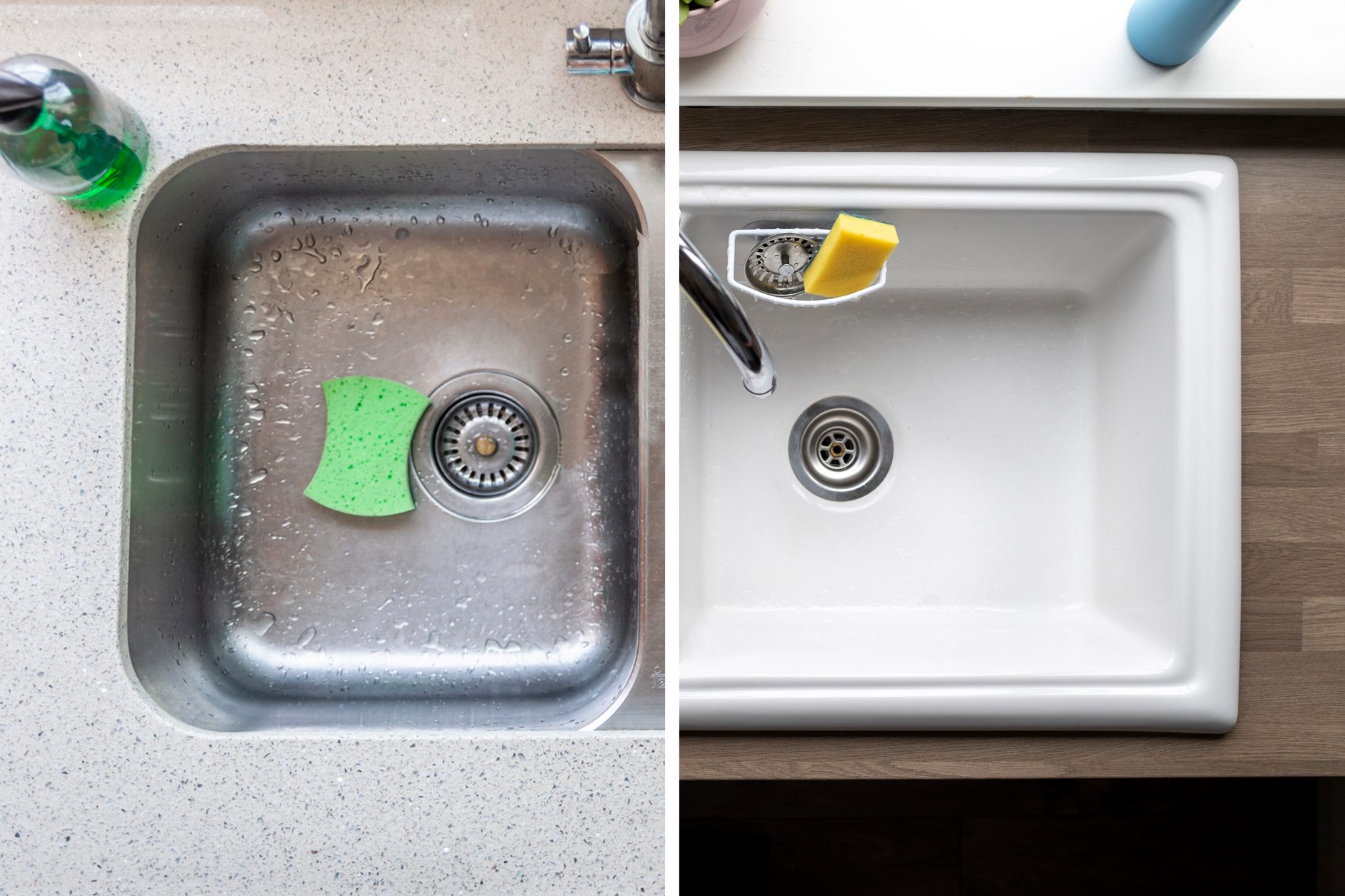Curious about undermount vs. drop-in sinks? Read on to learn about both types so you can decide which of these sink options will work for you.

Undermount vs. Drop-In Sinks: Which Is Better?

The first sinks were basins — drainless tubs that sat on shelves and gave users access to water without treking to a river or lake. Even today, most modern sinks are still essentially basins connected to a countertop, either from below (undermount) or from above (drop-in).
Undermount sinks are relatively new, only becoming common in the last 50 or 60 years. Drop-in sinks, on the other hand, are an evolution of plumbing trends that date back centuries.
Today, the choice between drop-in or undermount basically boils down to personal preference. The decision should be made during the design phase, because the choice will affect the countertop material and installation.
On This Page
What Is a Drop-In Sink?
The distinguishing feature of a drop-in sink is its surrounding rim, slightly wider than the sink opening in the countertop. When installed, that rim rests on top of the counter.
Below the counter, additional mounts screw tight against the underside. The slight lip where the rim meets the counter is then sealed with silicone caulk to provide a barrier to water and dirt.
What Is an Undermount Sink?
An undermount sink attaches to the underside of the counter rather than resting on a rim. Mounted from below, undermount sinks are held tight to the underside with a combination of silicone adhesive and brackets. The bracket mounts are secured by bolts or a strong epoxy adhesive.
Note that with an undermount sink, the hole in the countertop will be visible and exposed to water. For this reason, undermounts are traditionally used with solid materials such as marble or granite that can be polished and sealed.
Undermount and Drop-In Sink Materials
Both drop-in and undermount sinks are available in a wide range of materials, and they can also be mixed and matched. A granite drop-in sink can be installed in a wooden countertop, or vice versa. With so many materials to choose from, a vast range of looks and styles are possible for your sink/counter combo.
Undermount Sinks vs. Drop-In Sinks
Installation differences
A drop-in sink is installed from above, while an undermount sink requires enough space to install from below. Other than that, the basic concept is the same. Mounting brackets hold the sink against the countertop, with caulk sealing the transition from counter to sink.
The biggest installation differences involve the objects around the sink. The countertop must be prepped differently for an undermount than for a drop-in. As mentioned above, the hole sides will need a higher level of finish for an undermount sink. And the faucet and accessories require access holes drilled into the countertop.
For these reasons, it’s rare, though not impossible, to convert between the two mounting systems during a renovation.
Cost differences
Although undermount sinks are often more expensive, the countertop, rather than the sink itself, drives the cost. The solid body countertop construction required by undermounts means they’ve associated with higher end kitchens, though the sinks themselves cost roughly the same.
Many sinks are sold as “dual mount,” meaning they can be installed as a drop-in or undermount to meet your design needs. (If used as a drop-in, most dual mount sinks will still require separate holes drilled for the faucet and accessories.)
Maintenance/Cleaning differences
The sink material, rather than the mounting system, determines maintenance requirements. You clean a stainless steel drop-in the same as a stainless steel undermount; that’s true for any other sink material.
The only difference is at the transition between counter and sink. An undermount allows counters to be wiped smoothly, with excess crumbs falling into the sink. However, the gap between the sink and underside of the counter should be cleaned out regularly to prevent grime build up.
Drop-in sinks don’t allow for the same smooth swipe of the countertop surface, but the transition between counter and sink is relatively easy to keep clean.
Pros and Cons of Undermount and Drop-In Sinks
Here’s a breakdown of the pros and cons of both types of sinks:
Undermount pros
- Clean look;
- Easy to clean countertop.
Undermount cons
- Essential to clean or caulk gap;
- Requires a solid-body countertop;
- Requires a perfect opening in the counter;
- Higher prices.
Drop-In pros
- Can have a rough opening;
- Traditional look;
- Easy to recaulk.
Drop-In cons
- Slightly harder to clean countertop;
- May not have a “high-end” look.
Ultimately, which style of sink you prefer is up to you. Undermount sinks are good for homeowners seeking to highlight their solid-body counters with a sleek, modern look, with an eye on potential resale value. Drop-in sinks are better for those who love their traditional look, need to budget carefully, or have a laminate countertop.



















